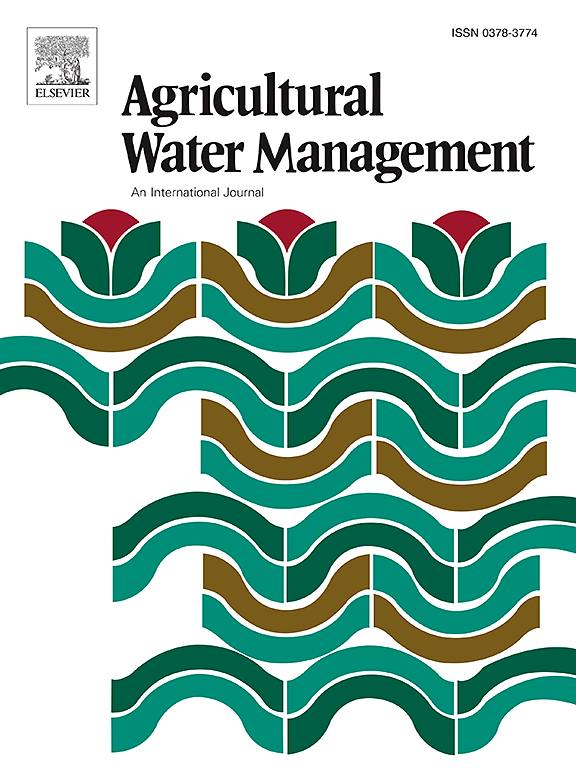Optimizing sowing date, fertilization, and irrigation strategies for winter wheat in Tensift Al Haouz (Morocco) using the DSSAT-CERES-wheat model
IF 5.9
1区 农林科学
Q1 AGRONOMY
引用次数: 0
Abstract
Countering poor wheat management holds tremendous potential for yield improvement. An increasing number of researchers are combining field experiments and crop models for management investigation. This study aimed to evaluate the performance of the DSSAT-CERES-Wheat model in simulating phenological stages, yield, biomass, evapotranspiration (ETa), and total soil water (TSW) and to identify the best sowing date (SD), irrigation, and fertilization scenarios for flood-irrigated winter wheat. The model was first calibrated on two wheat fields and then validated on four other fields using observed data from a flood-irrigated semi-arid area over two consecutive growing seasons (2002/2003 and 2003/2004). The model performed well during calibration and provided acceptable results during validation, with a root mean square error (RMSE) and index of agreement (d) of 4.74 days (0.69) for anthesis date, 2.12 days (0.98) for maturity date, 878 kg/ha (0.52) for yield, 1.17 mm/day (0.71) for ETa and 29.91 mm (0.71) for TSW respectively in validation. Mean Absolute Error (MAE) also showed acceptable performance of the model. Simulation of SD, irrigation, and fertilization scenarios over 30 years revealed that maximum yield was obtained with late sowing, irrigation when soil moisture was kept over 50 % of available water capacity (4.6 t/ha for irrigated wheat) and when sowing occurred on December 15 for rainfed wheat. The application of 300 kg N/ha resulted in the highest yield (11.6 t/ha) and the highest water use efficiency (WUE) (2.04 kg/m3). A comparison of the simulated yield and WUE with the experimental values revealed a significant increase, confirming the importance of irrigation scheduling based on soil moisture depletion and the adjustment of SD and nitrogen rate in maximizing yield and WUE in semi-arid regions. Once validated through field experiments, model simulations could serve as a basis for efficient management of crops and resources.
求助全文
约1分钟内获得全文
求助全文
来源期刊

Agricultural Water Management
农林科学-农艺学
CiteScore
12.10
自引率
14.90%
发文量
648
审稿时长
4.9 months
期刊介绍:
Agricultural Water Management publishes papers of international significance relating to the science, economics, and policy of agricultural water management. In all cases, manuscripts must address implications and provide insight regarding agricultural water management.
 求助内容:
求助内容: 应助结果提醒方式:
应助结果提醒方式:


